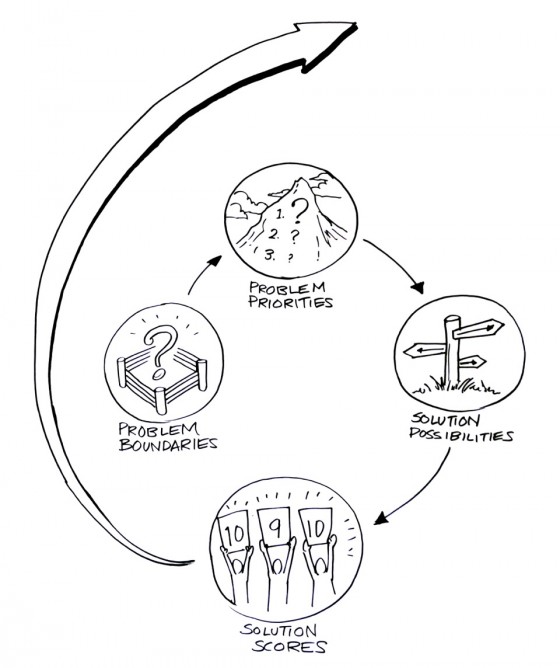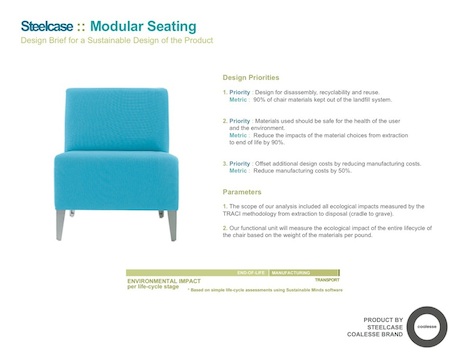For years, the Minnepolis College of Art and Design (MCAD) has been a leader in the United States for learning green design online. This past semester, a new class debuted there, with a new way of practicing design for sustainability—the Whole Systems and Life-Cycle method. This method was created for the Autodesk Sustainability Workshop in 2010, the same team who brought Core77 the Design For (Your) Product Lifetime showcase. While tens of thousands have viewed the Autodesk whole systems video, I wanted to give the design method a rigorous in-depth test in my classroom and in industry at the same time, by having students practice it on real products for real companies in ten-week projects. I’m happy to say it was a success—Panasonic’s liaison to the class, Deanna Wilkes-Gibbs, said they were surprised and delighted how the students’ ideas were not just improvements for sustainability, but were innovations for the functionality and aesthetics of the product as well. We couldn’t ask for higher praise, since our goal is to change sustainability from a limitation or burden into a valuable engine for creativity.
The class, Collaborative Product Design is part of MCAD’s sustainable design certificate program, which was just recently accredited to become an online Master of Arts in Sustainable Design. The curriculum was basically a virtualization of my earlier in-person Stanford class Green Design Strategies and Metrics reframed and expanded with the new Autodesk design method. MCAD likes to be careful with pilot classes, so we had a very small group of hard-working students—just enough to do two projects for two companies, Panasonic and Steelcase.
The Method
The design method emphasizes both the creative processes for coming up with new ideas, and the analytical processes for measuring the ideas’ successes—how well it meets sustainability and business goals.
It weaves these systems together in a four-step process:
- Define the product within the whole system.
- Use simplified LCA to find the biggest environmental impacts in the system and combine with business concerns to set priorities for redesign.
- Ideate new solutions targeting those priorities.
- Estimate the new solutions’ simplified LCAs and business factors, to find the most successful new ideas. Autodesk’s video and other materials give more details.
In the creative parts of the process, the students were constantly ideating from new points of view: energy-effectiveness, longevity and service-systems, laws and labels, good materials, biomimicry, and persuasive design. In one exercise on design for reuse/remanufacturing, the students did a scavenger hunt of how to build their product using nothing but components from other products the company sells. They came up with some fun and novel solutions, as well as practical and sensible solutions.
Below is a sampling of their ideas:
How to make the product 100% from other product take-backs. By Stefanie Koehler, AnnMarie Thomas and Shannon Rahkola, for Steelcase. Click for larger image.
Security camera powered by the door it watches. By Elke Erschfeld and Mirna Garza, for Panasonic. Click for larger image.
Biomimicry for better design-for-disassembly. By Stefanie Koehler, AnnMarie Thomas and Shannon Rahkola, for Steelcase. Click for larger image.
In the analytical parts of the process, the students made system maps, performed basic life-cycle assessments, wrote design briefs with priorities and metrics to measure their success, and used decision matrices to weigh many design ideas against each other. Below are two examples:
Life-cycle impact estimates for the top designs vs. the original product. By Elke Erschfeld and Mirna Garza, for Panasonic. Click for larger image.
Design brief, balancing the top sustainability priority with business priorities. By Stefanie Koehler, AnnMarie Thomas, and Shannon Rahkola, for Steelcase. Click for larger image.
This article was originally published by Core77.com in January 2012.





